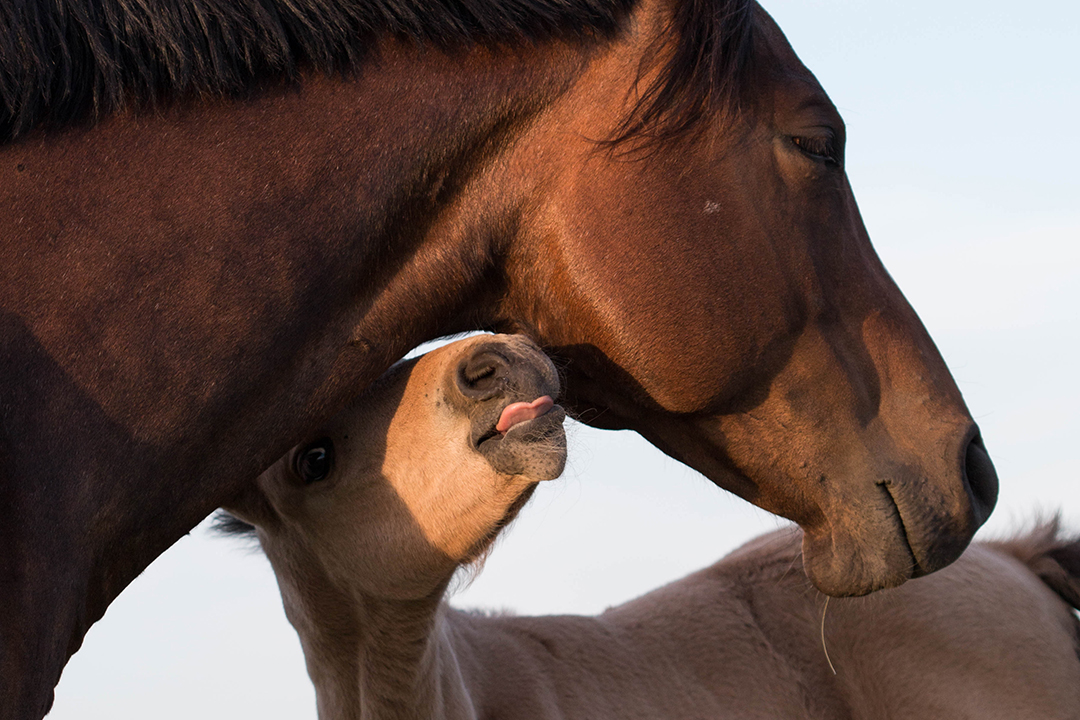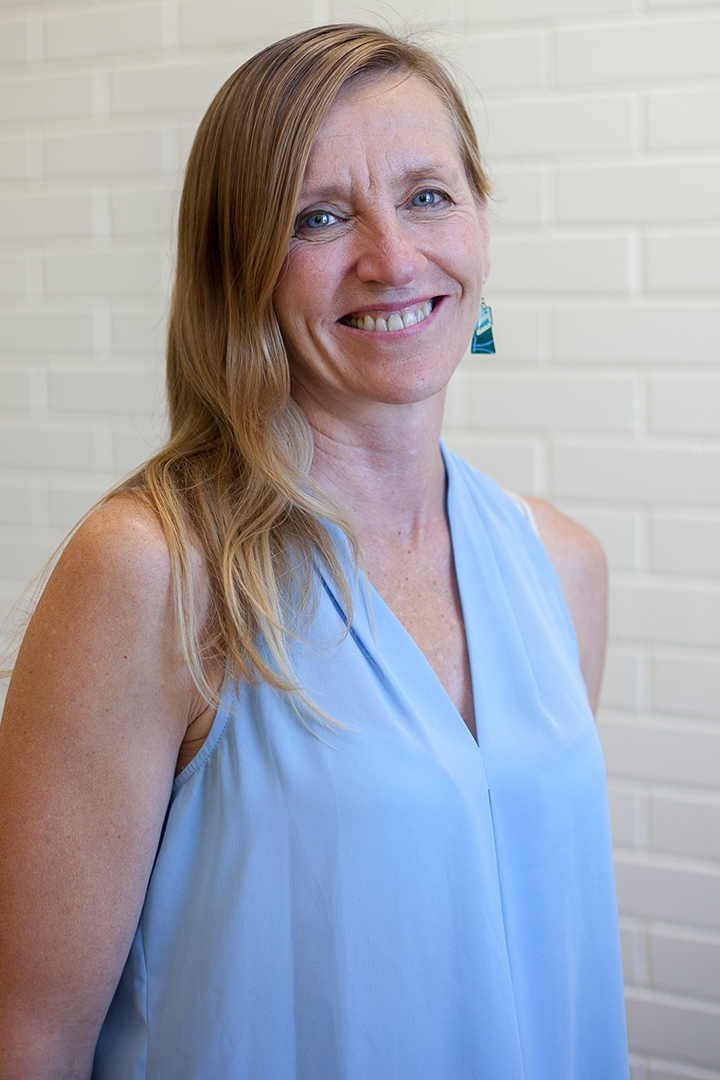
Signal pursuit
Dr. Claire Card has spent much of her career helping mares get pregnant, but for some horses and their owners, it’s complicated.
By Sheriton Smith and Jeanette Neufeld
“A lot of horses that are very valuable in terms of their athletic ability or their traits … are not retired from that career until they’re well into their teenage years,” says Dr. Claire Card, an equine theriogenologist and professor at the Western College of Veterinary Medicine (WCVM).
“Then it becomes harder for this type of an older mare — just like it would be in any older female — to become pregnant and carry the pregnancy.”
Many strategies are available to treat the infectious causes of pregnancy loss and infertility, but clinicians struggle to treat the non-infectious and sometimes age-related changes. For some breeds, using assisted reproductive technologies isn’t an option.
“There’s a large chunk of very valuable horses that are outside of that. For them it has to be natural breeding — it has to be the mare carrying her own pregnancy,” says Card.
These restrictions have created a huge market for reproductive therapies. But without a full understanding of the role of hormones during equine pregnancy, researchers are flying blind.
“If we can understand the processes better, then the therapeutic options become easier to investigate because you know what direction to go towards.”
Card has been investigating equine reproduction for decades. The progression of her team’s work in studying a process called maternal recognition of pregnancy (MRP) has created more understanding of the hormonal signals that support a pregnancy to continue or tell it to end.
Her most recent project, which is supported by the Townsend Equine Health Research Fund (TEHRF), is aimed at identifying how the hormones prostaglandin F (PGF) and prostaglandin E (PGE) interact during early stages of equine pregnancy. Large pulses of PGF are secreted by the uterus and cause a mare to come back into heat, while PGE is made by the embryo and may have opposite effects.
The WCVM researchers are specifically trying to pinpoint the pattern of PGE secretion.
“No one has ever really looked at that — we’ll be the first to report that,” says Card. “We are trying to determine if pulses of PGE are secreted and if non-pregnant and pregnant mares have different patterns.”
To do this, researchers will compare non-pregnant mares to mares that have one or multiple embryos. Their hypothesis: multiple embryos will send a stronger PGE hormonal signal that will allow them to track hormone levels more effectively during early pregnancy.
“We’re trying to make the signal louder so that it’s easier for us to detect,” says Card.
Her team will monitor the pregnant mares, taking hourly blood samples between day 13 and 16 of pregnancy — the period when prostaglandin levels typically peak and pregnancy recognition occurs.
The WCVM research team will send the samples to Dr. Mariana Diel de Amorim, an equine theriogenologist who earned her PhD degree with Card at the WCVM and is now a faculty member at Cornell University’s College of Veterinary Medicine. Diel de Amorim, whose research focuses on MRP, will process the samples in her lab to determine the hourly levels of PGF and PGE hormones in the mares’ blood samples.
The team completed the project’s control phase in 2021 by studying non-pregnant mares, mares with single embryos and two multiple embryo pregnancies. The next phase is to study at least four more multiple embryo pregnancies during the 2022 breeding season.
Ultimately, the more information gleaned about the horse’s unique reproductive physiology will contribute to the success of reproductive therapies.
“We feel that there may be some window where if we understand the physiology more, we can either work with intercepting those prostaglandin signals that harm pregnancy maintenance, or help the uterus develop a healthier uterine environment through regenerative medicine approaches,” says Card.
Sheriton Smith of Regina, Sask., is a third-year WCVM veterinary student and was part of Dr. Claire Card’s research team in 2021.
